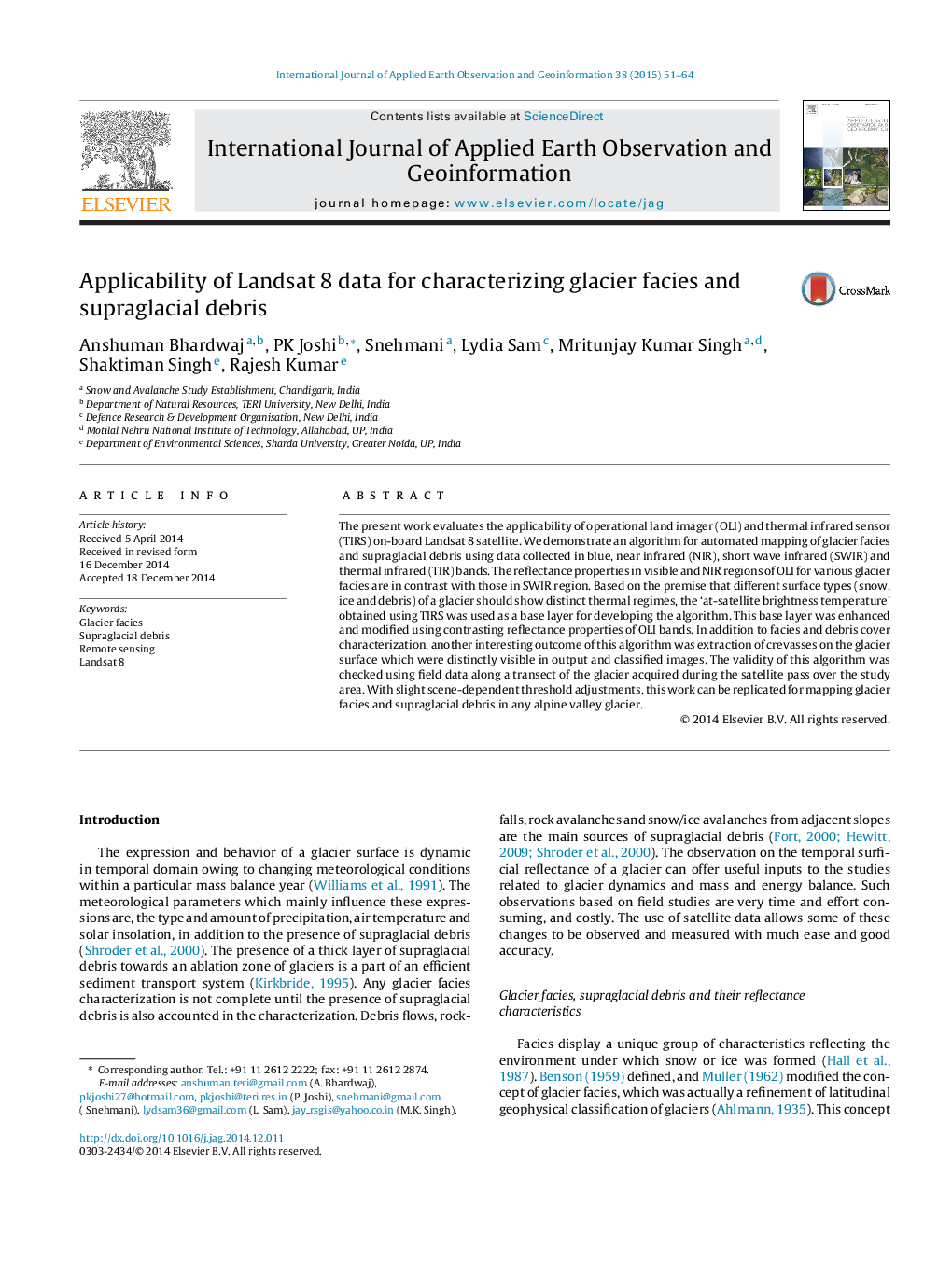| Article ID | Journal | Published Year | Pages | File Type |
|---|---|---|---|---|
| 6348642 | International Journal of Applied Earth Observation and Geoinformation | 2015 | 14 Pages |
Abstract
The present work evaluates the applicability of operational land imager (OLI) and thermal infrared sensor (TIRS) on-board Landsat 8 satellite. We demonstrate an algorithm for automated mapping of glacier facies and supraglacial debris using data collected in blue, near infrared (NIR), short wave infrared (SWIR) and thermal infrared (TIR) bands. The reflectance properties in visible and NIR regions of OLI for various glacier facies are in contrast with those in SWIR region. Based on the premise that different surface types (snow, ice and debris) of a glacier should show distinct thermal regimes, the 'at-satellite brightness temperature' obtained using TIRS was used as a base layer for developing the algorithm. This base layer was enhanced and modified using contrasting reflectance properties of OLI bands. In addition to facies and debris cover characterization, another interesting outcome of this algorithm was extraction of crevasses on the glacier surface which were distinctly visible in output and classified images. The validity of this algorithm was checked using field data along a transect of the glacier acquired during the satellite pass over the study area. With slight scene-dependent threshold adjustments, this work can be replicated for mapping glacier facies and supraglacial debris in any alpine valley glacier.
Related Topics
Physical Sciences and Engineering
Earth and Planetary Sciences
Computers in Earth Sciences
Authors
Anshuman Bhardwaj, PK Joshi, Snehmani Snehmani, Lydia Sam, Mritunjay Kumar Singh, Shaktiman Singh, Rajesh Kumar,
